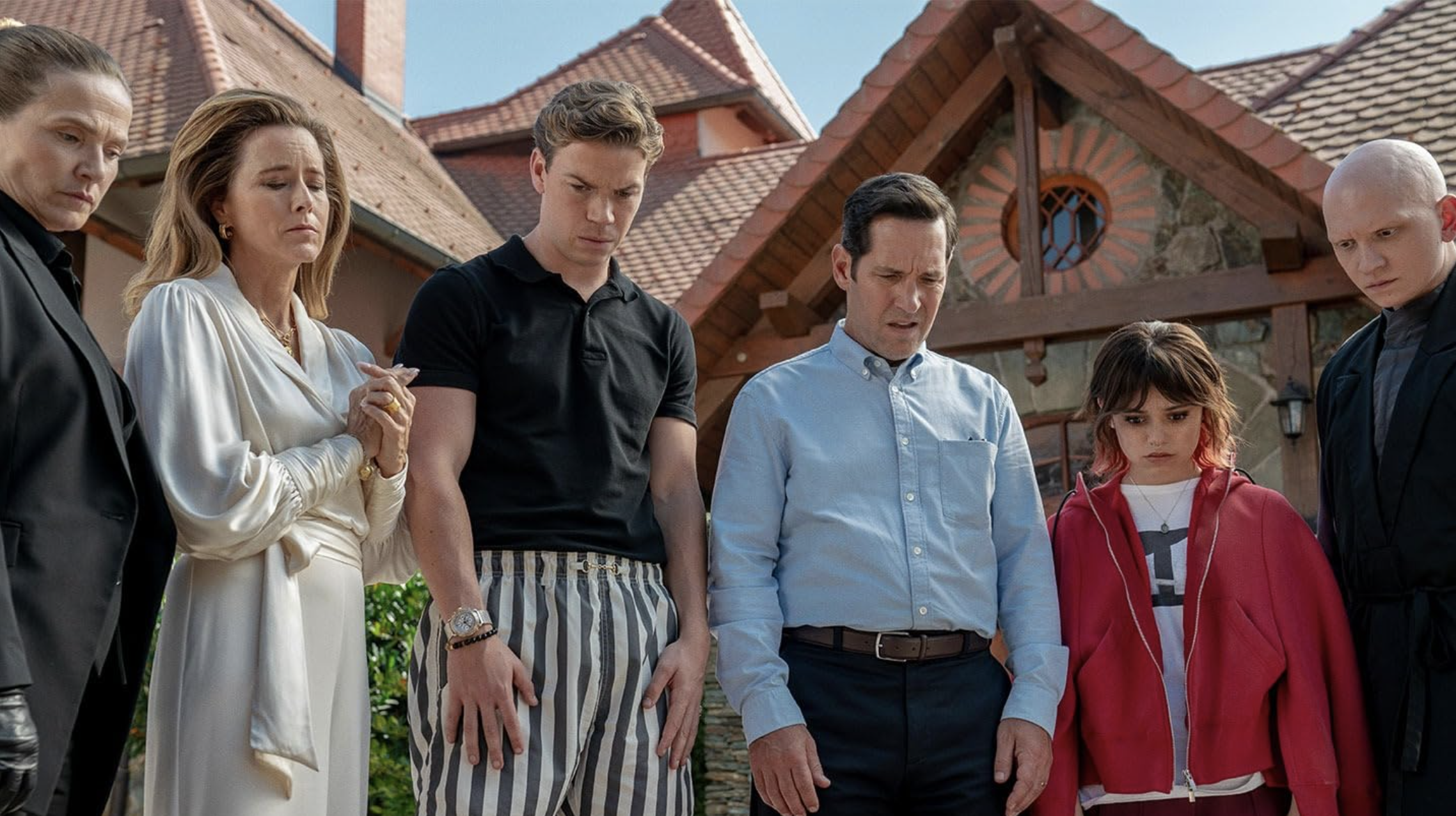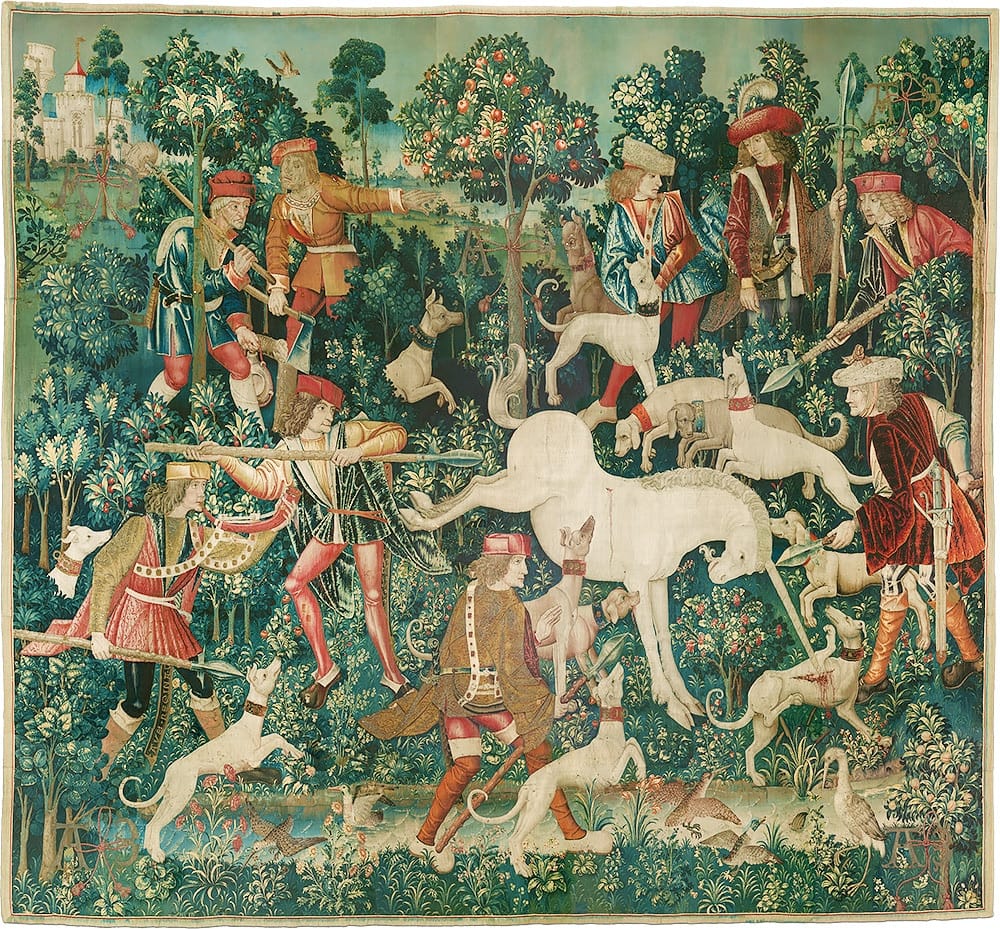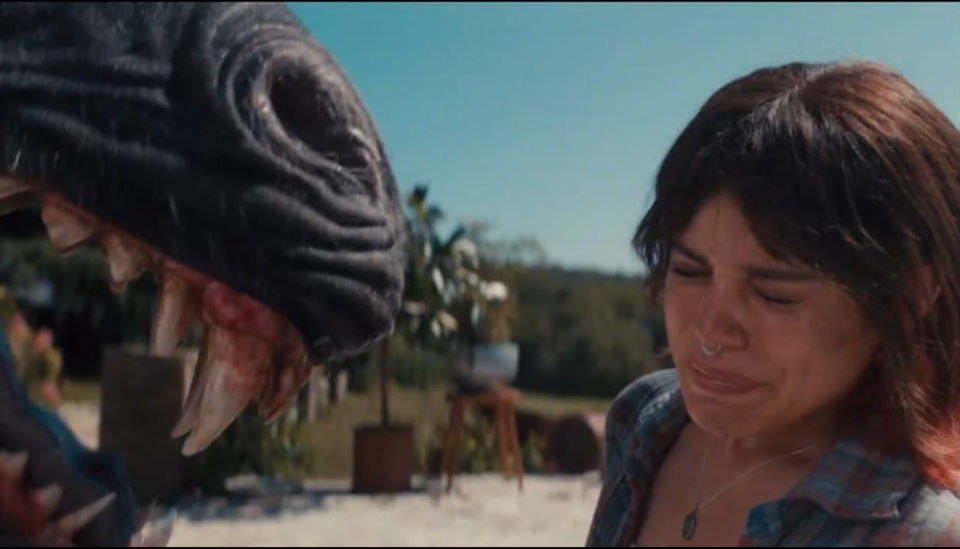Death of a Unicorn, the debut film from director Alex Scharfman, is a darkly humorous monster movie about terrible people being annihilated by vengeful unicorns. The story centers around Elliot (Paul Rudd), a widowed attorney, who brings his daughter Ridley (Jenna Ortega), an art history major at university, along on a business retreat at a nature reserve in the mountains. As they're driving up the mountain road to the manor house, Elliot hits a unicorn with his car, killing it.
While that act is bad enough, it grows worse when Elliot's employers realize what they have — not just a rare animal thought to be mythical, but a creature whose blood and horn are able to cure all kinds of ailments. The Leopold family, wealthy from pharmaceutical sales, immediately begin to exploit the unicorn. They bring in scientists to dissect and study the horn and its healing abilities in order to make a profit selling its power to their wealthy friends.

Greed is personified in the Leopold family — Odell (Richard E. Grant), Belinda (Téa Leoni), and Shepard (Will Poulter) — and each of the actors look like they're having a great time in their roles. The family members are superficial, callous, and are the driving force behind the death and destruction that follows. Even when Ridley presents them with historical information about unicorns, warns them of the danger, and offers solutions to save themselves, they still move forward with their exploitation of the creatures all the sake for their own wealth and pleasure.
Elliot contributes to the problem by going along with the Leopolds' plan every step of the way, all in the desperate hope of winning their favor and gaining some kind of future reward. He genuflects to the family, even as he grows more uncomfortable in the face of his daughter's protests and despite the fact that the Leopolds are stringing him along with no actual intention of including him in the profits. As a result, no one listens to what Ridley has to say regarding the danger, even as the situation escalates.
Drawing from Classic Unicorn Mythology
My interest in unicorns stems from more ethereal portrayals of the creature, such as The Last Unicorn or Legend, films in which the creature is represented as something pure and mysterious. And one of my favorite aspects of Death of a Unicorn is how it leans into this mythology surrounding unicorns, bringing a sense of cosmic mystery — while at the same time adding a flair of vengeful spirit.
In classic mythology, unicorns are either horse- or goat-like creatures with a single horn protruding from their forehead. They are typically aligned with purity, and their horn was said to be able to cure poison and heal any ailment. According to legends, the only way to capture a unicorn was to have a virgin maiden sit alone in a field. The unicorn would be drawn to her purity and lay down before her, making it vulnerable to the hunters.
The film draws on this classic mythology to evoke the lore behind its unicorns. Ridley draws on her knowledge of art history major to look into the stories surrounding unicorns, theorizing that humanity must have known about unicorns in the past (which is why they're depicted in art and tales), but has since stopped believing in them.
Specifically, Ridley turns to The Unicorn Tapestries, which were created in the Netherlands sometime between 1495 and 1505, to better understand the creatures. These tapestries depict the tale of a unicorn hunt, showing the unicorn purifying the waters and then being pursued by hunters. After being lured by a maiden, the unicorn is brought back to the castle and placed in an enclosure.

Death of a Unicorn suggests there are missing sections of The Unicorn Tapestries depicting the unicorns violently attacking and slaughtering the hunters, which is meant to account for the brutality of the unicorns' vengeance. The film also adds a touch of the cosmic, with the unicorns able to provide visions of a celestial connection between all things. But other than these additions, the movie leans into the lore, echoing the story of the tapestries, particularly the unicorns' purifying abilities and the method of pacifying the beasts with a pure-hearted maiden (Ridley).
Fantastic Creature Design
The unicorns in Death of a Unicorn feature a carefully designed physicality. They are able to shift between being beautifully lithe and intimidatingly monstrous. Each of the unicorns has their own vibe, leaning either more equine or goat-like, and with their horns ranging from the classic spiral to a terrifyingly jagged protrusion. The monstrous is also reflected in their snarling muzzles and long-sharp teethe, which are capable of ripping a person apart.
In an interview with Mashable, Scharfman described the process of designing the unicorns, which involved drawing from unicorn art and mythology, as well as various animals (such as horses, lions, and wolves). "You take all these references and all these historical accounts, and then at the end of the day, we wanted the creatures to feel real," he said. "[We were] trying to pull from nature as much as possible so that it didn't feel like we were just creating a monster in a lab, but rather it felt like something you believed could exist. A unifying umbrella over all of that was that they're almost like Ice Age creatures in terms of their aesthetic."

At the same time, the unicorns feel fantastical and ethereal. Scharfman noted, "A general design principle and rule of mythology of the creatures is that we're playing a game of telephone with the past. Today we might associate unicorns with purple and rainbows, so we made their blood purple, and we gave the meat and the blood a little bit of iridescence."
The filmmakers created practical puppets of the unicorns for the actors to interact with during filming. According to the Mashable interview, "it took three to four puppeteers just to control each unicorn head, but rigs of individual elements like hooves or snarling jaws could be operated solo, as hand puppets." The magic of the scenes is completed with digital effects to remove the puppeteers and enhance the designs.
The result is fantastic, providing a grounded quality to the unicorns presence allowing for them to feel weighty and threatening onscreen. In turn, this helped to contribute to the satisfaction of the violent and gory deaths that ensue. All in all, Death of a Unicorn is a good time.


